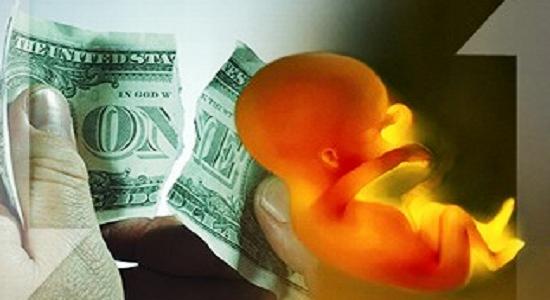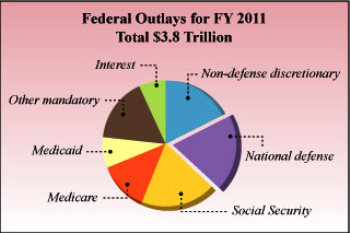Do Economic Arguments Against Abortion Make Sense?

The intersection between reproductive rights, health care and religion has been a bloody and treacherous place to travel for decades. The abortion issue as figurehead and lightning rod ignites the most heated social debates in the American political landscape, so much so that many decry such purely social and cultural issues as distractions from the real business of politics: the almighty dollar. So is it any wonder that there is an economic influence lingering around this controversy and that this association may be further impeding the progress of women’s reproductive freedom?
Dennis Howard, President of the pro-life group Movement for a Better America, has been researching the economic impact of abortion since 1995. In a 2008 interview, Mr. Howard asserted, “that the 50.5 million surgical abortions since 1970 have cost the U.S. an astonishing $35 trillion dollars, in lost Gross Domestic Product,” and “if you include all the babies lost to IUDs, RU-486, sterilization, and abortifacients, the number climbs to $70 trillion.”
The sum and substance of this position is that abortions and birth control shrink the population, causing loss in labor and consumer power and a decreased tax base for national revenue. However, the US population, even with access to birth control and legal abortions, is still steadily rising. According to the National Center for Health Statistics, the number of US births reached a record high of 4,315,000 in 2007, while that same year the CDC announced that life expectancy reached a new high of 78. So Americans are having more babies than ever and we’re living longer.
Even if Mr. Howard’s figures are accurate, overpopulation has plenty of its own set of detrimental economic and environmental side effects. In the United States, the expense of raising a child through the age of 17 can cost middle-income families anywhere between $221,000 and $300,000. This puts low-income parents–single mothers mostly–in an untenable position that often leads to recurrent poverty. Removing a woman’s right to choose not only removes her control over her body, but also her ability to control her economic future.

Alternatively, the government’s expense in welfare and social services is relatively minor compared to the cost benefit of a growing taxable population. And though the expenditure is high enough to incite hyperventilation among many an economic conservative, it makes up but a small fraction of government spending. For example, the Federal budget for 2012 allotted $7.4 billion to support supplemental nutrition assistance available to low-income and nutritionally at-risk pregnant and post-partum women, infants and children up to age 5. A not unsubstantial figure when one considers that the entire budget of the Department for Health and Human Services was $79.9 billion. But of course, these figures are miniscule when compared to, say, the $553 billion base budget for the Department of Defense or the $400+ billion paid annually to China in interest alone.
Even with record high birth rates and longer life expectancy, the United States still needs more warm tax-paying bodies to cover these growing debts. When we review the numbers, America’s interest payments to China represent more than 4 times the cost of the entire Health and Human Services budget. Perhaps a few billion dollars toward welfare and the sacrifice of women’s reproductive freedom is but a small price to pay for a vast increase in Gross Domestic Product or “babies,” as I prefer to call them.
Meanwhile the social debate rages on. There is a large and vociferous group of people who genuinely believe in an unborn child’s right to life and value that over a woman’s right to govern her own body. And there is an equal force that places confidence in an adult woman’s freedom of choice over the rights of an unborn fetus. This is an emotional argument that ignites the passions of the electorate, but the best anyone can really do is throw money at politicians and hope that their side wins.
Political leaders understand this and exploit emotional responses but ultimately, it’s all about the bottom line. Our personal feelings impact the outcome very little. Can the United States really use more children as collateral for its ever inflating debt? Unfortunately, the answer is probably yes. There are banks to be bailed out and never ending wars to be fought, after all.









